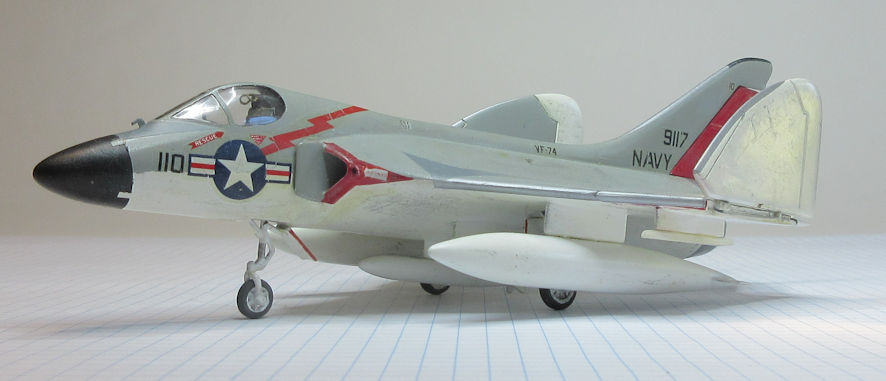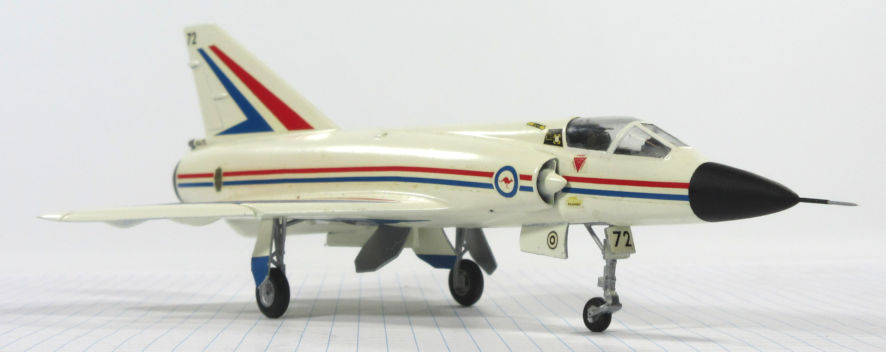Tailess Fighters
Douglas F4D, Dassault Mirage III and Northrop XP-79B
There are now over 100 fighter aircraft on show in this museum so it seemed appropriate to wander among them and choose three of them that have an unusual but common feature. One that stands out is tailless aircraft which were in vogue for a period because of their advanced flight characteristics including reduced drag, but also presented problems including aircraft stability. Leaving off the tail led to some very attractive aircraft and two of my favourites are the Douglas F4D and the Dassault Mirage III. There are several other tailess fighters to chose from in the Gallery and, after looking at them for a while, I finally chose the little white Northrop XP-79B which is interesting, partly because it is a forerunner of several Northrop flying wings including the B-2.
Most of the delta wing fighters that were designed in the late 1940s and the 1950s used aeronautical research conducted by Germany during World War II so a crop of deltas began appearing in the early 1950s. One of the early and more successful of these was the Douglas F4D which first flew in 1951 and held several speed records in the early 1950s. It entered service with the US Navy in 1956 and served with 17 US Navy and Marine squadrons at its peak in a variety of colourful liveries.
This model was made in 1989 from the ancient 1976 Airfix 1/72 kit. There was an even earlier Hawk kit (from 1956) which is best avoided. The Airfix kit was the best available until Tamiya released their F4D kit in 1998 and it is by far the best kit of this aircraft available in 1/72. I have four of those kits in my collection to make in a variety of colourful schemes one of these days, but I made this model before the Tamiya kits existed and went to the trouble of folding the wings in an attempt to distract the viewer from the very ordinary quality of the kit.
The Dassault Mirage III was one of the most popular interceptor fighters of the 1950s and 1960s and sold to many countries and several varieties. One of those customers was the Royal Australian Air Force with flew the Mirage IIIO (O for Oz) version which was basically a Mirage IIIE. What’s not to like about the Mirage III with its elegant French lines and the wide variety of colour schemes for all the air forces that flew it.
This model is one of a series I built in the 2000s which includes all the RAAF units that flew the Mirage III in some lovely schemes. You can find an article about that project here. I used the old Frog kit for this project because it was the best readily available kit of the Mirage IIIE available at the time and is generally accurate apart from being a little shorter than it should be. More recently High Planes released several Mirage III kits based on their Mirage III0 but the recent Modelsvit series of Mirage III kits easily outclass the old Frog kits and is somewhat better than the High Planes kits. However the cost of these new kits is high enough to discourage making a set of them, as I felt able to do with the much cheaper Frog kits.
The little Northrop XP-79 did not enjoy the success of the F4D or the Mirage III. While they were produced in their hundreds and thousands there was only one XP-79 and it was a failure. The XP-79B was a jet powered version of the earlier rocket powered XP-79 which was unsuccessful. So was the jet powered version which crashed on its first flight, killing the pilot and resulting in the project’s cancellation shortly afterwards.
This 1/72 model was made from the little RS models kit. It is a small kit with no significant challenges, if you have some prior experience in making short-run injection moulded kits. Most modellers will be more challenged by the all-white scheme but achieving such a finish is not difficult if you apply a number of thin white coats and ensure that the finish is smooth between coats.


